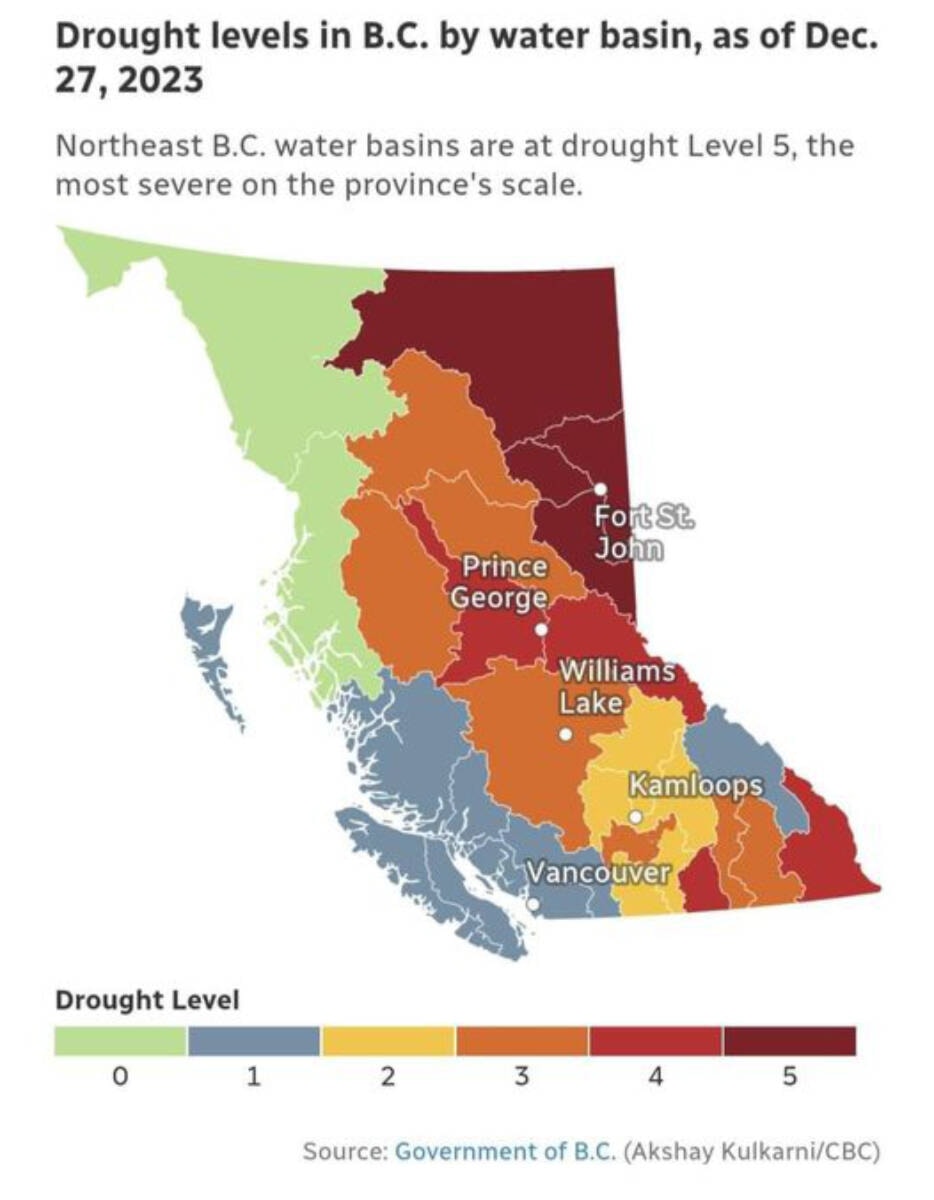British Columbia’s level three drought surge has raised concerns over the new year’s lack of rain and snowfall.
Armel Castellan, Environment and Climate Change Canada’s warning preparedness meteorologist, said Burns Lake had 33.8 millimeters of rain and snowfall last month.
He said that in normal circumstances, the precipitation [rain and snow] values on the climate database show around 44.1 millimetres.
He added that the difference between last month’s current and average precipitation was about 70-75 per cent and needs more information to make further comparisons.
“I don’t necessarily have that same information for the entire year at my disposal here because we typically don’t make rankings when building the database.”
According to Castellan, Prince George recorded its third warmest and second driest December since 1918.
“We’re only 64 per cent of normal precipitation; it is quite a few extreme amounts of precipitation deficit and also warmest years on record.”
Castellan is concerned about the current drought and remarked that the overall condition is not good.
The average temperature was 3.4 degrees higher than what is considered normal for the month.
The month was also very dry, meaning there wasn’t enough rain or snow to ease drought concerns in the province, Meteorologist Brian Proctor said.
“In general terms, it hasn’t been enough to alleviate the long-standing drought,” Proctor said.
“It’s helped to sort of pull it back a little bit, but what we really do need, more than anything else, is we need snowpack. And we’re not getting snowpack out of these kinds of systems at this point in time.”
In the northeastern municipality of Chetwynd, for example, less than a millimetre of precipitation was recorded in December. The community usually sees about 19 millimetres.
“In general terms, it hasn’t been enough to alleviate the long-standing drought,” Proctor said.
In the province’s last drought update of the year, which was posted at the end of November, it was reported that eight out of B.C.’s 34 basins are at the highest risk level for adverse drought impacts. The northeast corner of B.C., which includes the Fort Nelson and Peace regions, is currently at the highest level of drought. This means that adverse impacts are almost certain to occur.
Proctor says the first full week of January is expected to get cooler with some snow possible at higher elevations.
–with files The Canadian Press
